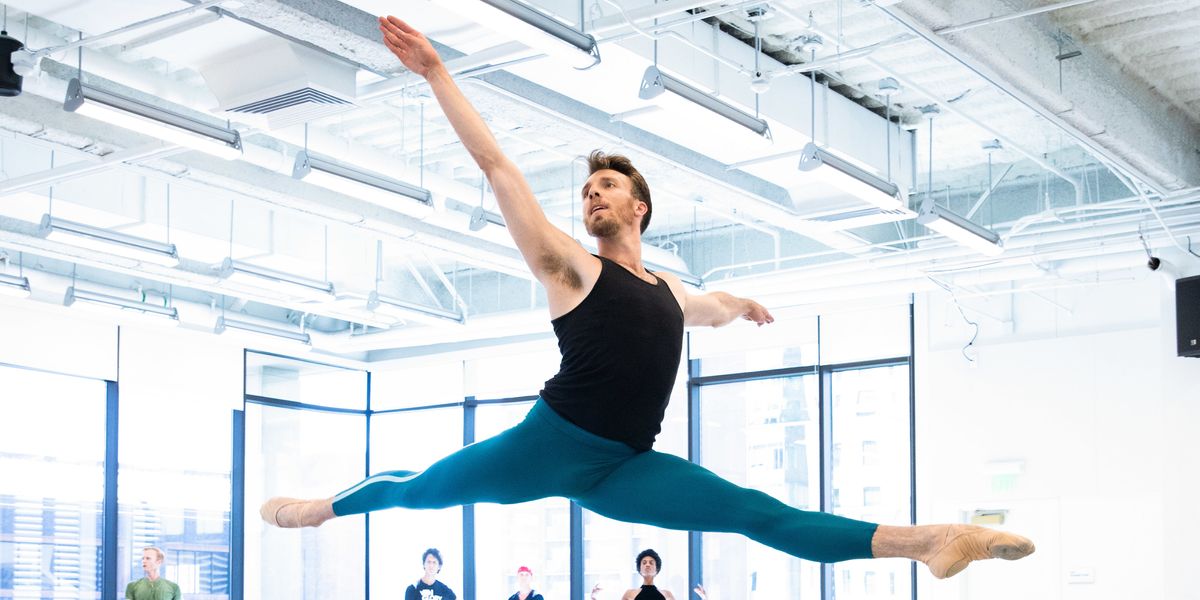What It's Like to Be Back in the Studio: Adam Sklute on Ballet West's Return
What does it take to come back to the stage mid-pandemic? While many American dance companies have already called off all live performances through the end of the year (or longer), some, like Salt Lake City’s Ballet West, are cautiously starting to return to some semblance of “normal.” For the past three weeks, Ballet West dancers have been in the studio taking maintenance classes meant to help them get in shape for rehearsals.
“We’re working until we cannot work,” says artistic director Adam Sklute. “Obviously, there’s only so much we can do. And everybody’s health and safety is the priority. But we wanted to keep on going. It’s what’s given us a sense—as an organization and also our artists—of hope and drive.”

Courtesy Ballet West
The performance plan
The first step to figuring out when to bring the dancers back to the studio was determining when, and how, to safely put on a performance. Although a full-length had been scheduled for late October, it quickly proved too complicated to produce. But a smaller repertory program planned for November 6–14 seemed like a reachable goal.
“It was originally going to be our resident choreographer Nicolo Fonte’s Almost Tango, a new work by Jennifer Archibald, and then Twyla Tharp’s Nine Sinatra Songs,” says Sklute. “I started looking at things and doing the math, and realized we have so many married or partnered couples who live together. Nine Sinatra Songs is nothing but seven duets. I wondered if Twyla would let me tell her at least who each couple could be, and then she could tell me who would do each section. And she agreed. And she agreed to do the two group sections with masks on.”
Meanwhile, Archibald decided to create a physically distanced ensemble work in which everyone would dance at least 10 feet apart. And when Fonte realized he couldn’t safely set Almost Tango, he asked Sklute if he could instead create something new, working within pandemic-related parameters.
Getting the dancers back in shape
Right now, the company is focusing on maintenance classes to help the dancers get their bodies ready for rehearsals, which begin next week. The company has created “pods” of up to 14 dancers, based on who will perform together in November. Each of these groups has a studio to themselves for class, with live video feeds in each room so all the company members can safely train at the same time with one teacher and pianist.
The classes are two hours long to give the dancers enough time to slowly work through barre and center. “What’s fascinating to me is that people are extremely articulate when it comes to very small footwork, tendus, that sort of thing,” says Sklute. “I was like, ‘You guys!’ And they were like, ‘Yes, because this is all we could work on at home!’ ”
But larger movements like pirouettes and jumps are, unsurprisingly, more challenging. Sklute started the dancers out with only two-legged jumps, and waited to have them travel across the floor or try intricate enchaînement. Many dancers have also asked for private coaching with artistic staff to work on personal hurdles.
“Because the choreography for Twyla’s Nine Sinatra Songs on a classical ballet level isn’t super-demanding, and because there’s new choreography being created by the other two choreographers, we feel like it can accommodate the challenges of where their bodies are right now,” says Sklute.
He wants dancers to know that as eager as everyone is to get back to performances, it’s not worth getting injured. “Right now my only expectation for the dancers is that they slowly get their bodies back into shape,” he says. “I tell them in class, Be careful. As we start jumping, think about the landings. I don’t expect perfection. Don’t overdo it right now. You don’t have anything to prove to anybody.”
Ballet West has also postponed all photo shoots that would typically happen at the beginning of the season until the dancers feel more comfortable in their bodies again.
Safety protocols in place
Like any dance organization operating in person right now, the new normal includes a long list of rules: Masks are required, touch is forbidden except between dancers living together, dancers need to stay 10 feet apart, studios are cleaned for an hour after each class and everyone has to log their activities in the building for possible contact tracing. In addition to working closely with local health officials to adhere to city and county regulations, Ballet West is also following all the guidelines from AGMA.
“We used our summer intensive as a blueprint,” says Sklute. Although the program was smaller than usual, it served 265 students, and not a single positive case of COVID-19 was detected.
Sklute is also paying close attention to what his colleagues around the country are doing given their local situations. “I’m on a weekly phone call with 10 other artistic directors around the country,” he says. “It started primarily with discussions around what we could do to focus on building racial equity, but it’s become a great pipeline to discuss how we manage during COVID. We’re ultimately in this together. We are a unique and special art form, and we have to work together to create unique and special ways to be able to do what we do.”





